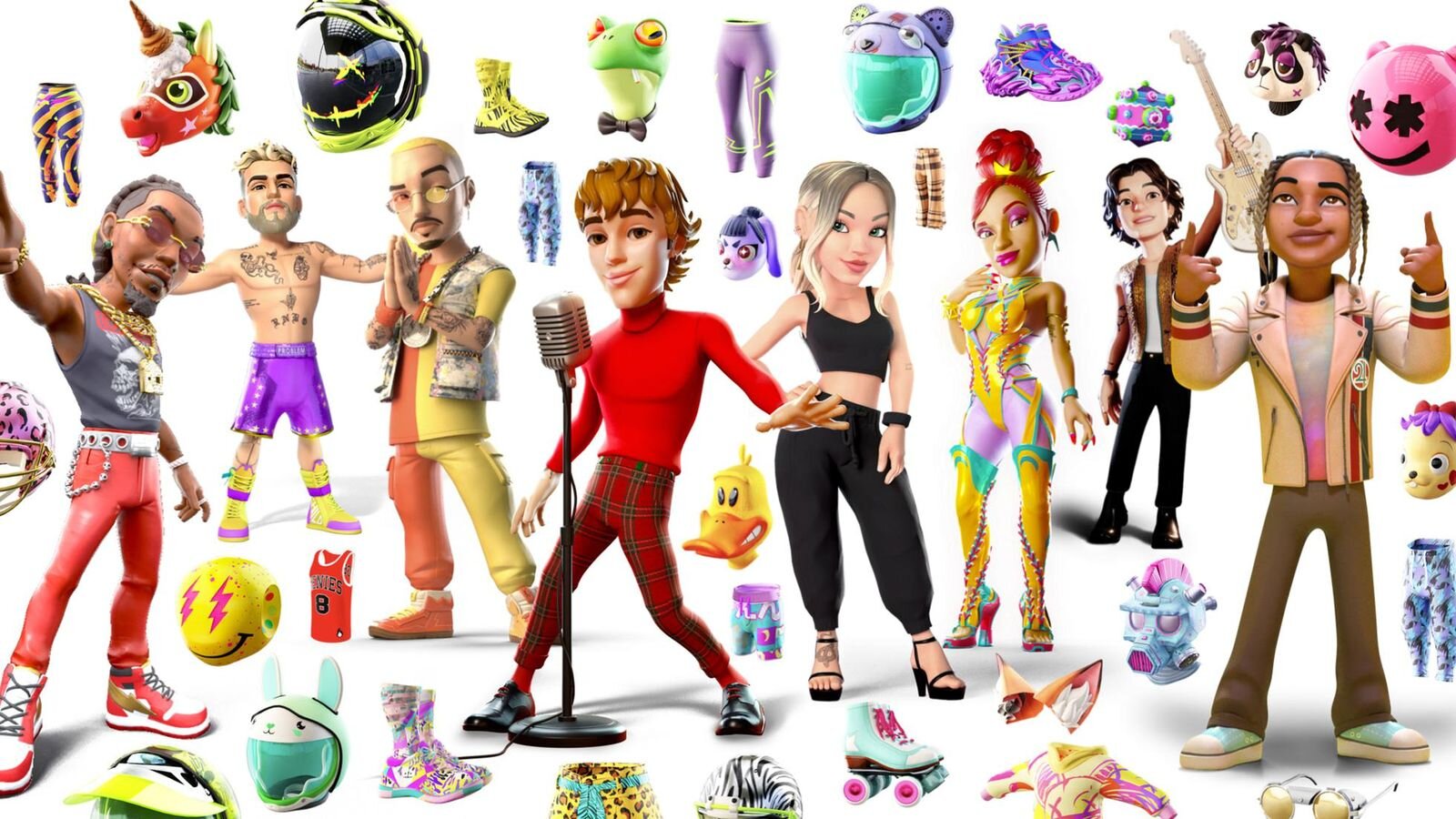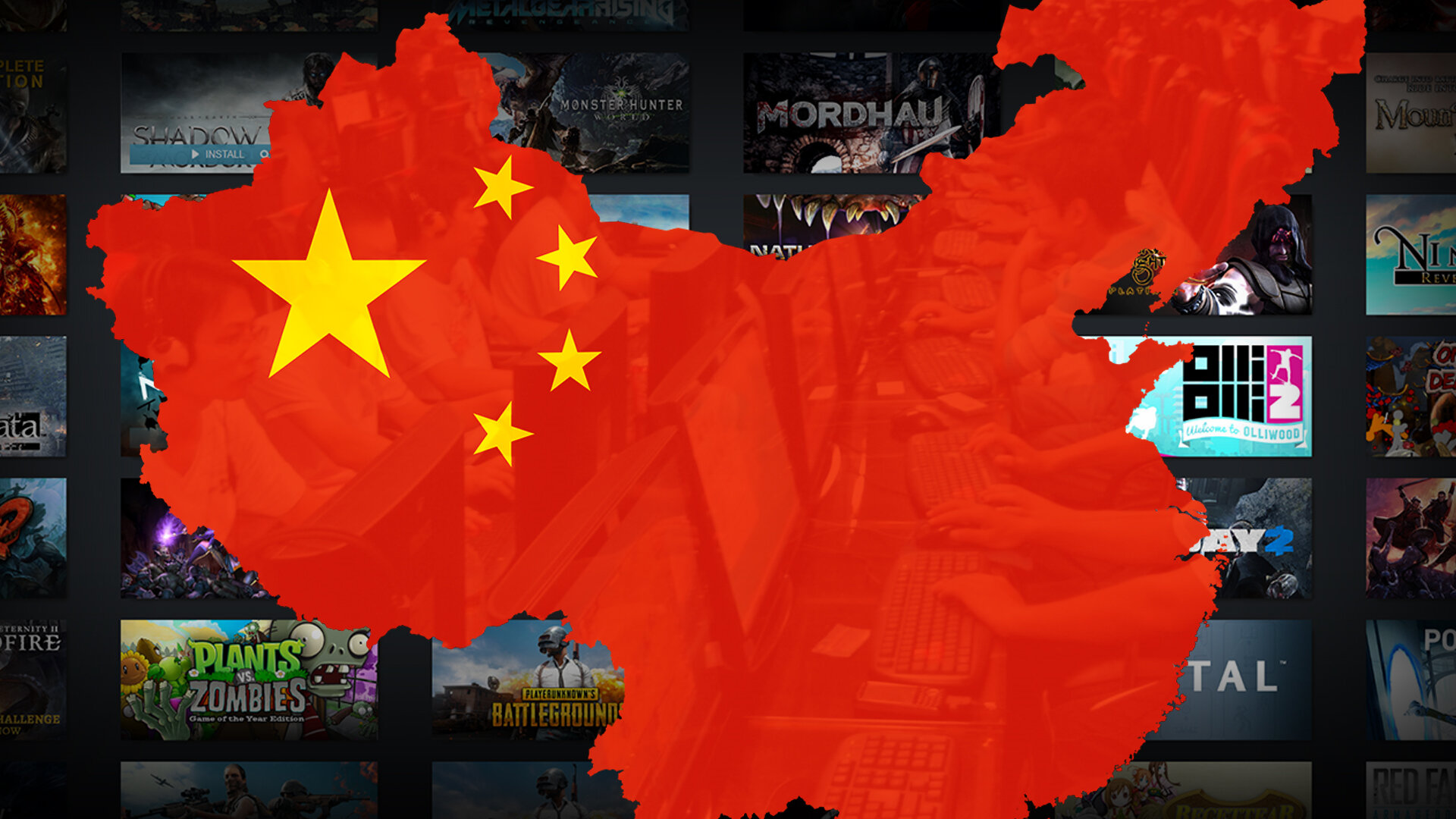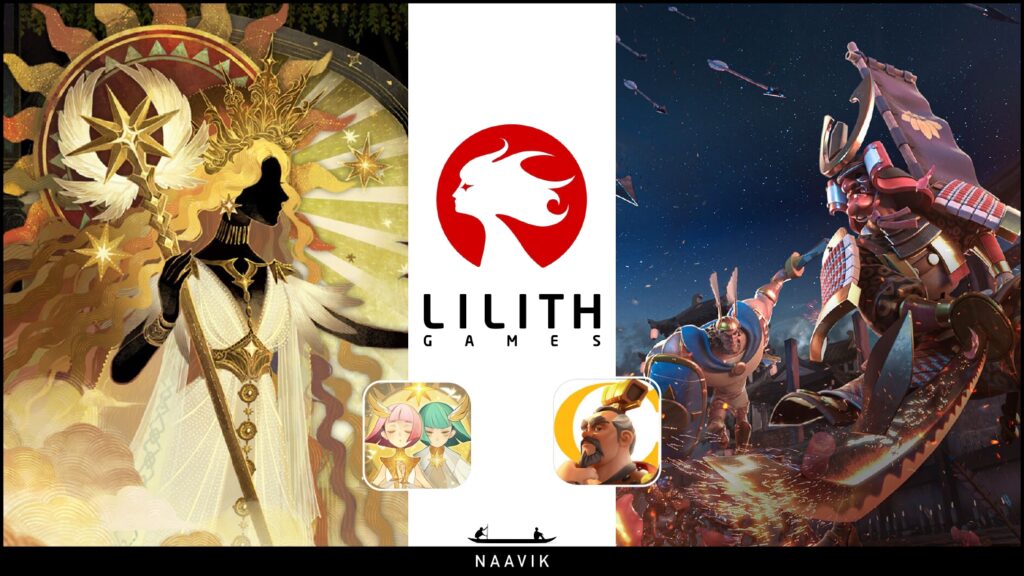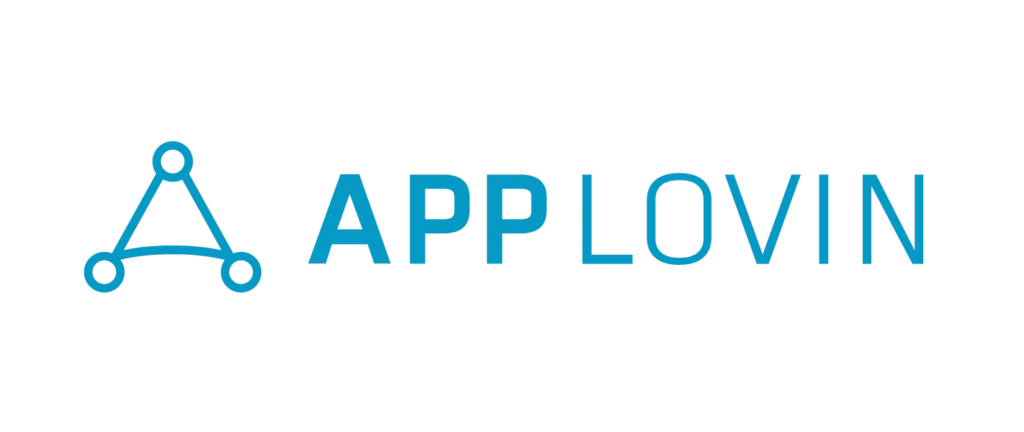Hi Everyone. Happy Sunday! We’re covering a wide variety of topics this week: Xbox and Sony earnings, next-gen UGC marketplaces, and China ISBNs.
A quick note: we’re gearing up to produce more long-form pieces again and would love input and participation from our audience. If you’re itching to write a high-quality deep dive — such as a game deconstruction, business breakdown, or trend report — please get in touch with us! We’re happy to hash out ideas and help you create something to be proud of. For context, here are three previous deep dives we’re proud to have published with guests: Genshin Impact | Stillfront | Where Crypto Meets the Metaverse
Let’s dive in…
#1: A Tale of Two Consoles
Source: CNET
This week, Microsoft and Sony reported quarterly earnings, which showcased accelerating growth (thanks to console launches) and continued indications of their long-term strategies. Let’s break it down by company and then compare the two.
Microsoft / Xbox:
-
Q3 gaming revenue jumped 50% YoY to $3.5B, driven by 232% growth in hardware and 34% growth in content and services.
-
The Xbox Series S | X clearly catalyzed acceleration, but content and services still contribute over 80% of total revenue.
-
Therefore, it makes sense why Xbox is widening its addressable audience via a cross-platform approach. This week Microsoft also announced it’s lowering its take-rate on games in the Windows Store to 12% (like Epic’s) to compete against Steam. This isn’t game-changing until the platform better attracts non-console game devs and players, but it’s a clear shift.
-
Notable quote from CEO Satya Nadella: “As games evolve into metaverse economies, we are building new tools to help anyone sell creations on our platform. Minecraft is nearly 140 million monthly active users, up 30% year-over-year, making it one of the leading platforms in the creator economy. Creators have generated over $350 million from more than 1 billion downloads of mods, add-ons and other experiences in Minecraft. This is not counting and including activity outside of our marketplace. We are also seeing a vibrant marketplace emerge in Flight Simulator with partners now able to sell content directly within the game.”
Sony / PlayStation:
-
Q4’s “Game & Network Services” revenue grew 52% YoY to $6B.
-
Sony has now sold 7.8M PS5s, nicely outpacing Xbox but also the PS4 in the same timespan previously.
-
Similar to Xbox, 74% of Sony’s “Game & Network Services” division came from non-console/peripherals revenue. Within that, PlayStation Plus subscribers hit 47.6M (+15% YoY).
-
Sony is expecting next fiscal year’s first party games revenue to be larger than this past year, which included big hits like Ghost of Tsushima, Spider-Man: Miles Morales, and The Last of Us Part II.
-
Related quote from CFO Hiroki Totoki: “We plan to increase development personnel and other costs in our in-house studios by approximately [$180M] YoY as we further strengthene our in-house produced software.”
For all the talk about how Xbox and PlayStation are different, it’s important to remember that they have a lot in common. Both companies are seeing console demand outstrip supply, are investing to scale exclusive content, are building thriving + growing services, and are looking to expand in new ways.
It’s that last point, of course, where differences emerge. Microsoft is building a cross-platform ecosystem with Game Pass as the centerpiece. Plus, given Microsoft’s enormous financial firepower and recent "news” — Discord acquisition rumors, PC storefront fees dropping, xCloud, building creator tools — its ecosystem may grow wider in scope in a way that PlayStation can’t match. It’s a new, orthogonal strategy with uncertainty, but it’s poised to build uniquely strong competitive advantages if it works.
On the contrary, Playstation is doubling down on building awesome, exclusive content as its key differentiator. This approach is more focused, which has pros and cons. For now, it continues to give Sony more success in consoles; however, as a result, the company is less nimble for when the market evolves (which it inevitably will) and worse positioned on other devices. The company is working on VR and starting to think about bringing its IP mobile, but that’s all a tall task (whoever’s involved should read our Transitioning from Console to Mobile deep dive).
In reality, both companies are winning, and it doesn’t make sense for Xbox and PlayStation to converge onto the same strategy, because both parent companies have distinct backgrounds and advantages. My gut says that despite selling fewer units, Xbox is doing a better job skating to where the puck is going, but so long as PlayStation pumps out hits they’ll continue to excel, too. This quarter’s growth can’t be indefinitely extrapolated (new consoles don’t launch all the time), but as new consoles and services continue to ramp up I expect we’ll see both teams succeed at a larger scale. (Written by Aaron Bush)
#2: The Next-Gen Marketplace
Source: Forbes
The next generation of UGC will resemble video game marketplaces. They’ll be community-led with creator-driven economies.
The best examples, in my opinion, are the ones that play at the intersection of digital identity and commerce:
-
Snap’s Bitmoji is persistent across all Snap products (including its games!) and the iPhone keyboard.
-
Roblox paid creators $330M in 2020, primarily from digital accessories that can be worn across experiences.
These are fascinating examples of individual’s emerging agency online, but we’re still in the early days.
In the latest progression of such marketplaces, Dapper Labs – maker of NBA TopShot — is teaming up with celebrity-driven avatar company Genies to launch a digital avatar NFT marketplace that brings the worlds of crypto and UGC together in an interesting way (for both consumers and brands). That’s a lot of buzzwords, but making digital commerce/fashion and identity persistent across the blockchain and open to a wider community is actually pretty cool. If you’re still having a tough time wrapping your mind around what that means, here’s a quick primer on Genies:
-
Genies’ Avatar Agency helps creators and A-list celebrities develop their own digital personalities and then build commercial and creative opportunities around them (mainly digital apparel and accessories). This is its B2C side; in the future, everyone can have their own avatar and be able to buy digital merch from celebrities and brands.
-
Genies also has an SDK, which enables B2B brand opportunities for digital assets. Gucci and GIPHY are example partners.
Genies’ future is so exciting because it has the potential to make its avatars + NFT items interoperate across a wide range of technologies — like messenger apps, social networks, and even games — and create value in a way that’s native to the internet. As much as “the metaverse” feels like an overused term, Genies CEO Akash Nigam said it well: “I think most people talk about the metaverse being the destination. We talk about the metaverse being a mindset where you're fully consumed by the Internet, and you care about what people think about you and who you are on the Internet, even sometimes more than your physical self.”
The bottom line: Genies is pushing the boundaries of digital identity and consumer commerce. It’ll use content from brands and creators to do just that. Imagine a future where every new IRL apparel drop is simultaneously created digitally (“Digi-fizzy”) through an easy-to-use platform like Genies. With every new partner, Genies’ reach and offerings expand, and the service becomes more appealing to consumers. 3D artist teams will become table stakes for every brand (esports orgs will be early adopters), and the products will be scalable, scarce, and distributable on the blockchain. Consumers will also be able to monetize their own independent “digi-wear.”
It’s easy to imagine a world where digital commerce outpaces physical commerce. The Genies x Dapper Labs initiative feels like a sure-fire accelerant, perhaps even bigger and more impactful than TopShot in the long-term. (Written by Fawzi Itani)
Sponsored By Spiketrap
Unlock instant audience understanding with Spiketrap, the conversation analytics company providing contextual awareness for creators, platforms, investors, and brands.
Its proprietary Clair AI extracts the signal from the noise, automatically identifying conversations as they arise and providing clear, actionable insight into what moves audiences.
Whether monitoring a brand, product, or nuanced concept, Spiketrap’s knowledge graph-powered technology captures digital conversation, its impact, brand safety, and true audience sentiment. Its always-on measurement, convenient API, and intuitive dashboard democratizes data and accelerates speed to insight.
#3: Do New Chinese Regulations Spell Trouble or Opportunity?
Source: PC Gamer
On April 14th, Chinese Regulators updated its mobile game compliance rules — better known as ISBN — announcing the ‘Game Evaluation Scoring Details,’ which came into effect April 1st, 2021.
It took years for the Chinese mobile game industry to adapt to the 2016 ISBN environment, and, as a result, there’s an expectation that it’ll take a while for current companies to adjust to these new compliance policies as well. While the regulation hasn’t slowed the game industry’s growth per se, the industry has shifted dramatically. Here are some of the changes:
-
Re-skinned games, once a staple and a major issue, are no longer compliant.
-
Studios are incentivized to create higher quality games.
-
Chinese companies are forced to focus on the global market.
Unfortunately, the ISBN has a high fixed cost, which means that both Chinese and foreign indie studios generally have a much higher hurdle in their go-to-market. It also means that China’s large publishers like Tencent and NetEase have much greater control on which foreign games to publish.
Does it even make sense for indie studios to enter China? Perhaps as a last resort option, but truthfully, nobody really knows yet. How does the new ‘Game Evaluation Scoring Details’ affect the market? On average, foreign games ISBN will take 18-24 months and only 150-200 foreign games will receive ISBN every year. Each publisher will take this into account during game evaluation.
Here are some of the details:
-
There will be 2 or more ‘experts’ scoring each ISBN application.
-
Scoring in 5 categories includes: “value system,” “originality,” quality,” “cultural,” and “development progress”. There are even more sub-categories under the umbrella category.
-
The Score is given on a basis of 0-5. Overall scores of 3+ will proceed while score of 4+ will be expedited. Scores of 2 and below will be rejected.
-
The application is rejected if any category receives a score of 0.
-
Here is the current list of the latest ISBNs for foreign mobile games.
Some industry observers say that the new scoring system demonstrates regulators’ sophistication and nuance, with a focus on quality and content. However, some analysts have expressed concerns with regard to who the so-called “experts” are, whether they favor big publishers, and if the scoring will adversely limit creativity in indie games. We’ve also previously discussed how upstarts such as Lilith Games and ByteDance are challenging larger publishers. I’m not sure what implications these regulations will have on emerging competition either, but I’m keen to track it.
Such discussions are still ongoing among China netizens. The gaming industry is now waiting for more ‘empirical evidence,’ namely the next batch of successful ISBNs as well as rejections to provide guidance. For myself, I tend to look at the silver lining — “4 points and above means expedited application.” Perhaps this means that high quality foreign games now have a path to quicker ISBNs. Perhaps not. (Written by Owen Soh)
🎮 In Other News…
💸 Funding & Acquisitions:
-
Rollic, an Istanbul-based Zynga subsidiary, acquired a hyper-casual studio called Uncosoft (makers of hit game, High Heels). Link
-
Gaggle Studios secured $2M from Makers Fund and released early access to its debut title, Goose Goose Duck. Link
-
FB acquired Downpour Interactive, developer of VR first-person shooter, Onward. Link
📊 Business:
-
Nexon announced that it’ll use 2% of its cash to buy $100M in bitcoin for its treasury. Nexon is the largest gaming platform in Korea (and 4th largest in Asia), and the first company in Asia to buy BTC for its treasury. Link
-
Jam City’s title, Harry Potter: Hogwarts Mystery, reached $300M in revenue and 82M downloads. Link
-
Rovio’s Q1 showcased flat revenue and lower profits from a year ago. However, growth is faster in comparable currencies, and lower margins are a result of higher UA spending. Link
-
MTG reported 9% sales growth in Q1 but continued losses. The esports vertical remains hurt by the pandemic, but the gaming business grew 23% over last yet. Link
-
Studio Huuuge Games grew profits 131% in 2020, totaling $57M. Link
-
Brazil’s Wildlife Studios is starting to open up independent studios like SuperWow around the world in order to expand its presence and brand. Link
✒️ Game Design:
-
A new NES Tetris technique called “rolling” was recently developed by “Cheez_Fish”. Game design also extends into the embodied experience of the player with the computer. Link
📜 Culture & Games:
-
Made by Oculus Studios and Respawn Entertainment, Collete won the Oscar for best short documentary. It first premiered as a VR Game. Link
-
The much-anticipated Pokemon Snap sequel launched on Friday.
👾 Miscellaneous Musings:
-
Anime continues a push with its IP into emergent forms of media like video games, with the latest My Hero Academia open-world RPG. Link
-
Lots of news on console design: Xbox x Reality on NTWRK, Nintendo Switch’s Customizing Platform, and a golden Nintendo Wii. Xbox | Switch | Wii
-
Riot Games announced a $1M partnership with Wings Fund to provide more opportunities to underrepresented developers in gaming. Link
-
Bitkraft Ventures partnered with blockchain advisory firm Delphi Digital to invest at the intersection of gaming and crypto. Link
📚 Content Worth Consuming
Gamification is Dead. Long Live Applied Game Mechanics! (BITKRAFT): “All three (non-gaming) companies use game design principles and mechanics to not only disrupt their respective industries through more appealing value propositions and experiences for their users, but also through creating strong engagement loops. This might sound like the oddly familiar term “gamification”; however, we believe gamification is a thing of the past and has evolved into something more sophisticated – what we call Applied Game Mechanics (or “AGM” for short). What’s the difference? Whereas gamification was primarily about turning existing products into games, Applied Game Mechanics is about building products that subtly incorporate the most effective game design principles and mechanics from the ground up.” Link
Zynga Co-Founder Justin Waldron (Games Club): “One of our key bets with PlayCo is to get back to this mode of distribution, where people are mainly playing with their friends, and that’s how they discover other games. Then you'd get back to a game company that could have a larger outcome and much more scalable distribution. With the escalating battle of performance marketing, we’ve seen across all these companies, not only does it mean that companies are focused more and more on games with a lot of depth like mid-core games. It also means that they've pivoted away from pure social.” Link
SuperJoost Video Games Industry Review: Leading up to gaming’s earnings report season, Joost Van Dreunen, author of One Up, published a compilation of his learnings and observations on macro trends in the gaming industry. Link
“Bobby Kotick Reflects on Three Decades of Running” Activision Blizzard (GamesBeat Summit): “Kotick hasn’t spoken much at industry events in a while, and so we were happy that he agreed to do a fireside chat with me at our GamesBeat Summit 2021 event. I talked with him for about 40 minutes on a wide range of topics, from his early days at Activision to the Metaverse. It was interesting to learn that he had to once sell the furniture to keep the lights on at Activision. We also learned about his views on the merger-and-acquisition craze sweeping through gaming and the industry’s prospects for further growth.” Link
Thanks for reading, and see you next week! As always, if you have feedback let us know here.












